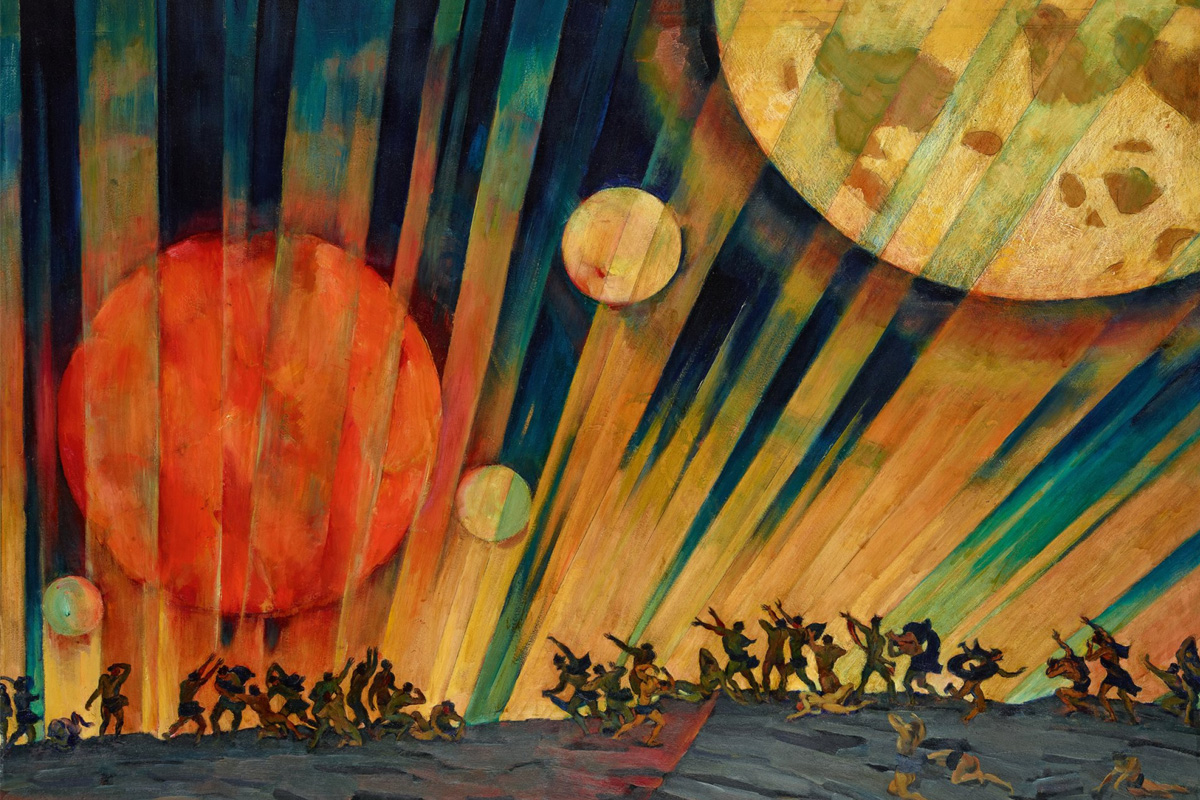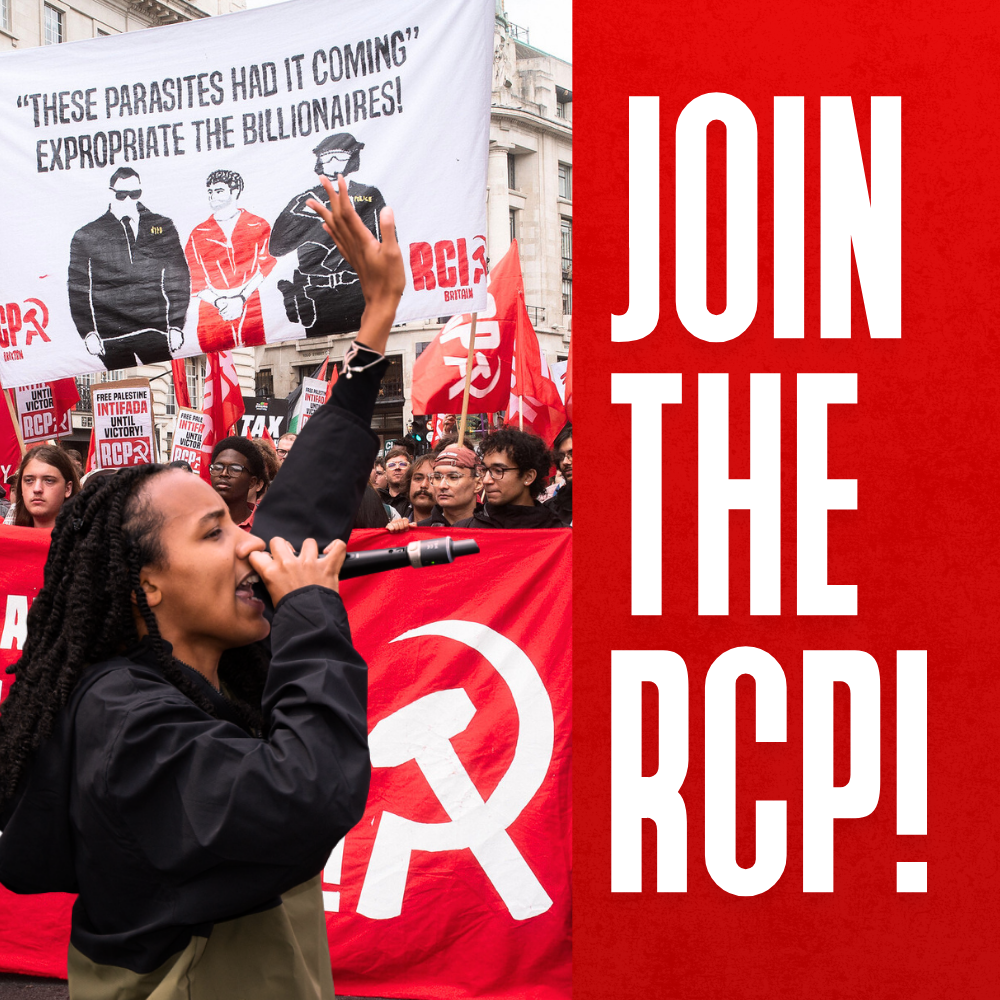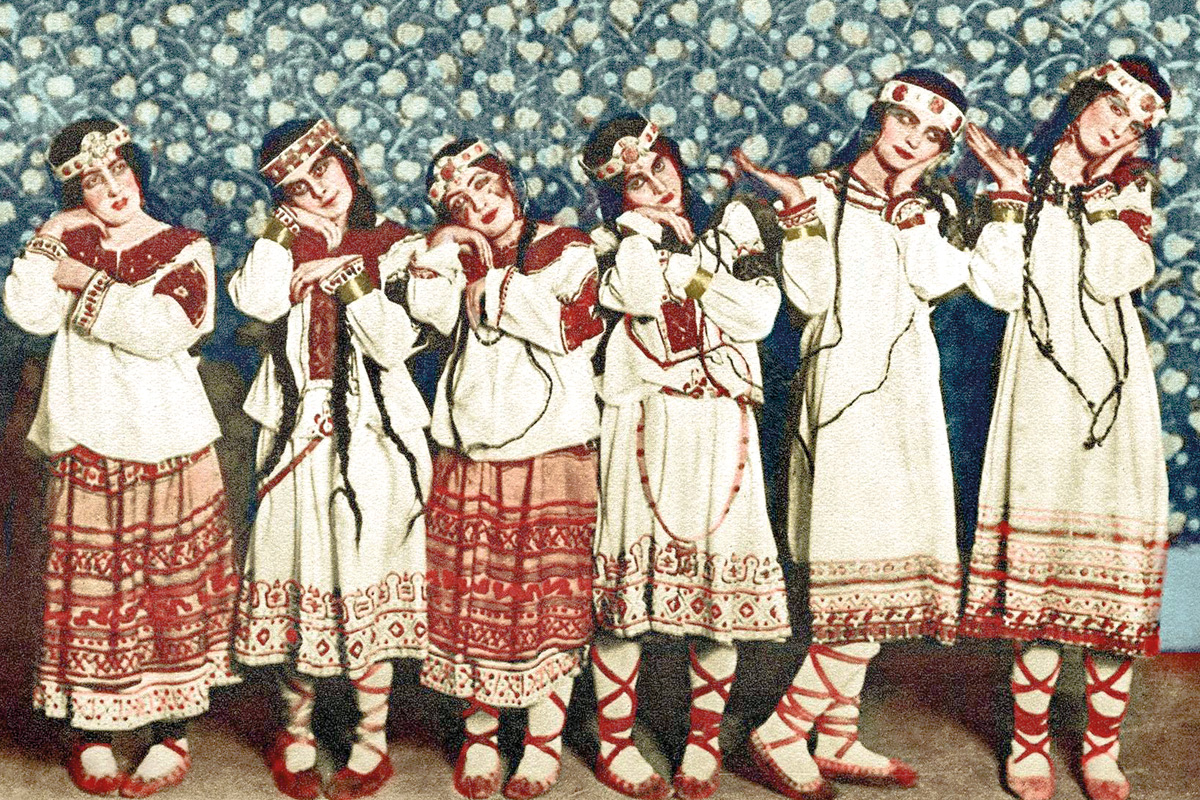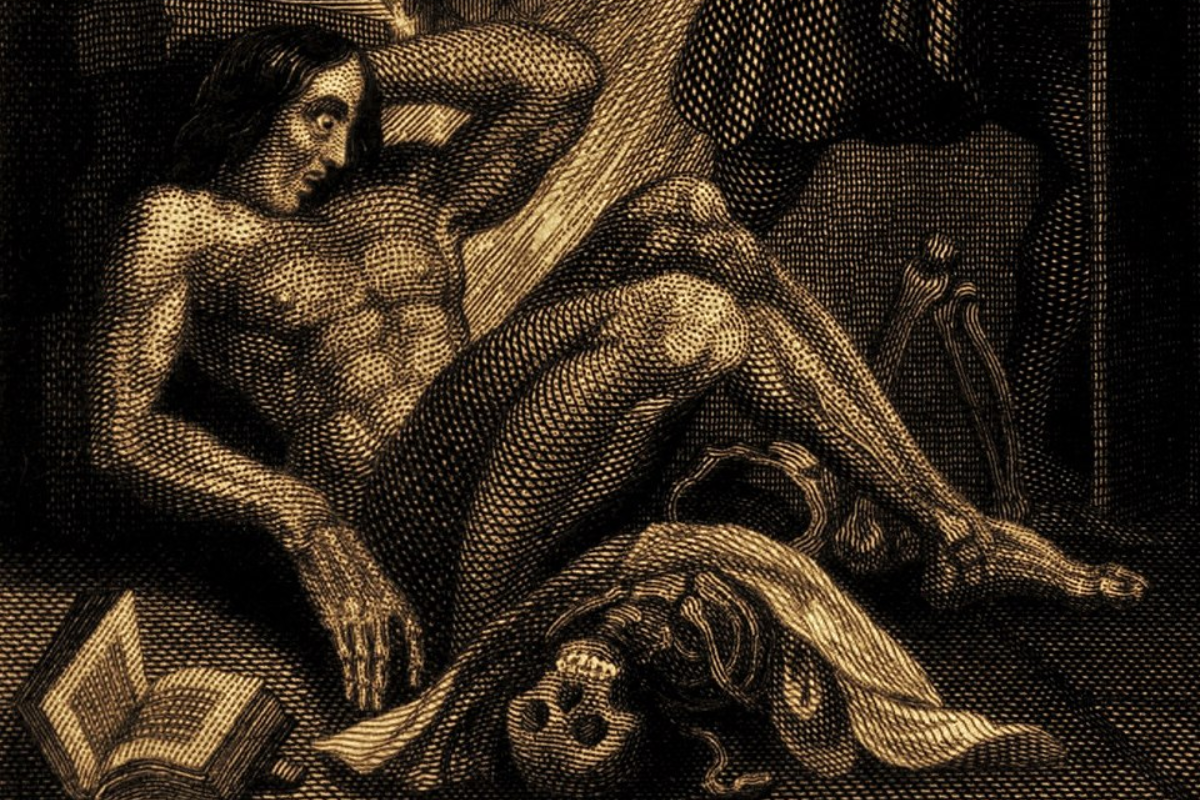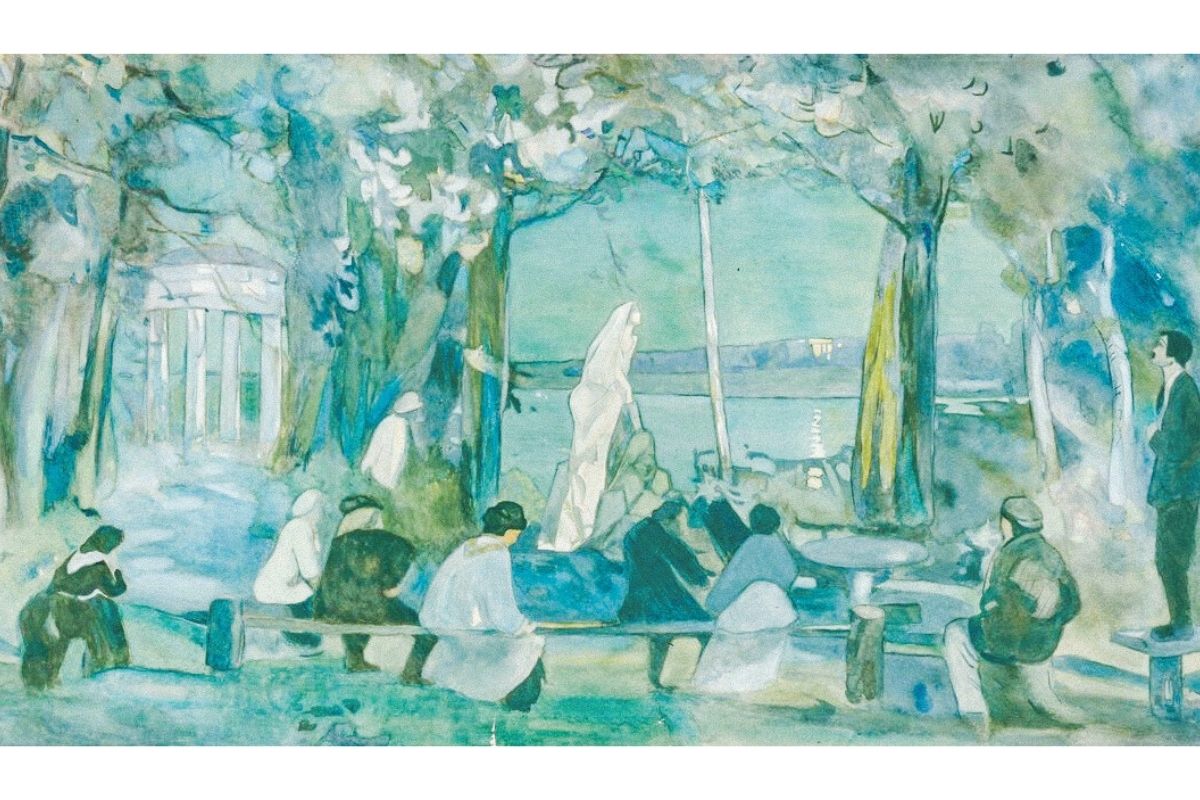In day-to-day life under capitalism and class society, the vast majority of people feel alienated from society, including from its greatest art and culture.
In a revolution, all of this changes and is upended, as the masses move to change society. Consequently, in every revolution, there is almost always a corresponding artistic expression of ordinary people’s desire for freedom and a life worth living.
The French Revolution, as Russian Marxist Georgi Plekhanov remarked, made art a matter for the masses, and not just the ruling class. The numerous holidays, processions, and celebrations based on the ideas of the revolution stand testament to that.
The Russian Revolution did the same thing, by throwing open the doors to art and culture for the masses who had never before experienced it. The entire country, including the peasantry, was swept up in an “epidemic” of theatre, and agitprop trains brought sight and sound to people who had no experience of any form of art.
Bourgeois critics and academics, who are the gatekeepers of art and culture in all class societies, never fully recognise or acknowledge the connection between art and revolution. And where they do, it is at most a begrudging admission that some of the greatest art known to humanity is the direct product of revolutions.
But why do these trends emerge? Why is there a link between revolution and art?
Impoverished and stunted
To paraphrase Marx, through his activity and interactions, man changes the world, and in the process changes himself and his consciousness.
Through revolutions, by entering the scene of history, workers become more conscious of their role in society. It is through revolutions that ordinary people become aware of both their spiritual and material impoverishment. They open their eyes to what life could and should be like.
In his early writings, Marx explains that the manifestations of life for an individual are also an expression of social life. In other words, what we do with ourselves on a day-to-day basis in the world is inseparable from our relationships with one another in society.
We use our senses, not only passively, but actively. Through labour we transform the world around us.
But under capitalism, we are alienated from this process: we have no say in the work we perform; we do not own or control the products of our labour; and often we do not even appreciate or agree with what we produce. And so our sensuous activity under capitalism is necessarily one-sided and stunted.
Chaos and restrictions
Furthermore, we are constantly subjected to a seemingly endless series of arbitrary and chaotic outcomes of capitalism.
Some people, without any discernible skill or talent can overnight become extraordinarily successful or wealthy. Other more able or deserving people, meanwhile, may lose their jobs or their livelihoods in an equally incomprehensible manner.
Vincent Van Gogh died in poverty and obscurity, for example, whilst artists like Damien Hirst today can amass a fortune without even producing their own artworks.
In ordinary life under this system, people are not given the ability to think, feel, and act as real humans. Being free to pursue, enjoy, and experience art is what allows us to live a full and humane life.
As Marx writes: “The forming of the five senses is a labour of the entire history of the world down to the present. But the sense caught up in crude practical need has only a restricted sense.”
Inaccessible and underfunded
Under capitalism, the masses do not have the opportunity to hone their artistic sensibility. They might be too busy working long hours just to keep themselves and their loved ones alive, to have the time or energy for art.
This work is the opposite of the conscious and pleasurable labour of creating or involving yourself in art. As Marx said, “the worker’s activity is not his (own) spontaneous activity. It belongs to another; it is the loss of himself”.
Some workers, but by no means all of them, might not even have an appreciation of higher art. They might quite understandably be put off by the vapid petty-bourgeois art world, or think it’s not for them. Or they might become accustomed to – or content with – ‘bad’ art that is churned out by the capitalist entertainment industry.
Access to the arts is also prohibitively expensive under capitalism. The high cost of equipment, instruments, practice space, and training all contributes towards this.
Whilst the private school Eton has three theatre spaces, two concert halls, and an entire musical library, for example, the state education budget is being cut by hundreds of millions of pounds a year, with arts funding being particularly affected.
No wonder there are difficulties cultivating a passion for the arts amongst working-class youth, who cannot even be taught about culture properly, in well-funded and fully-equipped schools.
Exploitation and explosion
In fact, for thousands of years, culture has been the monopoly of the ruling class. The majority, meanwhile, has been systematically excluded from knowledge, science, art, and politics.
Art under class society is therefore separated from everyday life, which for the most part is a harsh, alienating, and brutal struggle for existence.
But in a revolution, all of this changes: what were yesterday downtrodden and oppressed people become suddenly involved in hugely complex and engaging social activity.
Voir cette publication sur Instagram
This includes things like mass strikes, soviets and democratic assemblies, or other forms of workers’ organisation. In both the German and Russian Revolutions, for example, the oppressed and war-weary masses spontaneously set up mass councils of workers and soldiers overnight.
In this process, the exploited population can achieve things they never thought they were capable of. And at the same time, they come to appreciate more complex art that expresses much deeper things, like the desire to change the world.
Even the downtrodden and mostly illiterate peasantry in Russia was transformed by the October Revolution. After the revolution, the peasants collectively expressed themselves by performing countryside plays, or folk songs where the peasants couldn’t read.
During the Carnation Revolution in Portugal in 1974 there was an explosion of colourful graphic art, posters, murals, and paintings. All of this came from the masses, and was the expression of their desire for freedom. This tradition of street art in cities like Lisbon still exists today.
Unleashing potential
Revolutions, therefore, when they take place, are not just necessary to achieve material needs like food and shelter, but are necessary to spiritually free humans from their impoverishment – and to quite literally make our senses human again.
Once again in the words of Marx:
“The care-burdened, poverty-stricken man has no sense for the finest play; the dealer in minerals sees only the commercial value but not the beauty and the specific character of the mineral: he has no mineralogical sense.”
Under capitalism, we are not generally in a position to see the bigger picture; to see things as a whole, or for their own sake. Rather, our outlook on life is narrowed by our isolation, and by the immediate pressures of daily life.
In a revolution, and under socialism, we are freed from this humiliating and one-sided mentality, and we begin to appreciate things in their fullest sense.
The sensuous outburst of human activity that emerges from the practical experience of carrying out a revolution is part of this process – of human beings striving to become whole again. This is what a revolution provides to the masses.
The bourgeois like to think that they alone are born with the right to dominate culture: opera or ballet; music conservatoires; or architecture schools. But every human being has the potential to appreciate these things, and to excel in all of them. And this artistic potential of the masses will be unleashed when they move to change society.
The process of revolution is nothing less than the masses realising – both materially and spiritually – a full existence and a life worth living. And that is why, as communists, we fight to overthrow capitalism: for the future of humanity and for the future of art.

